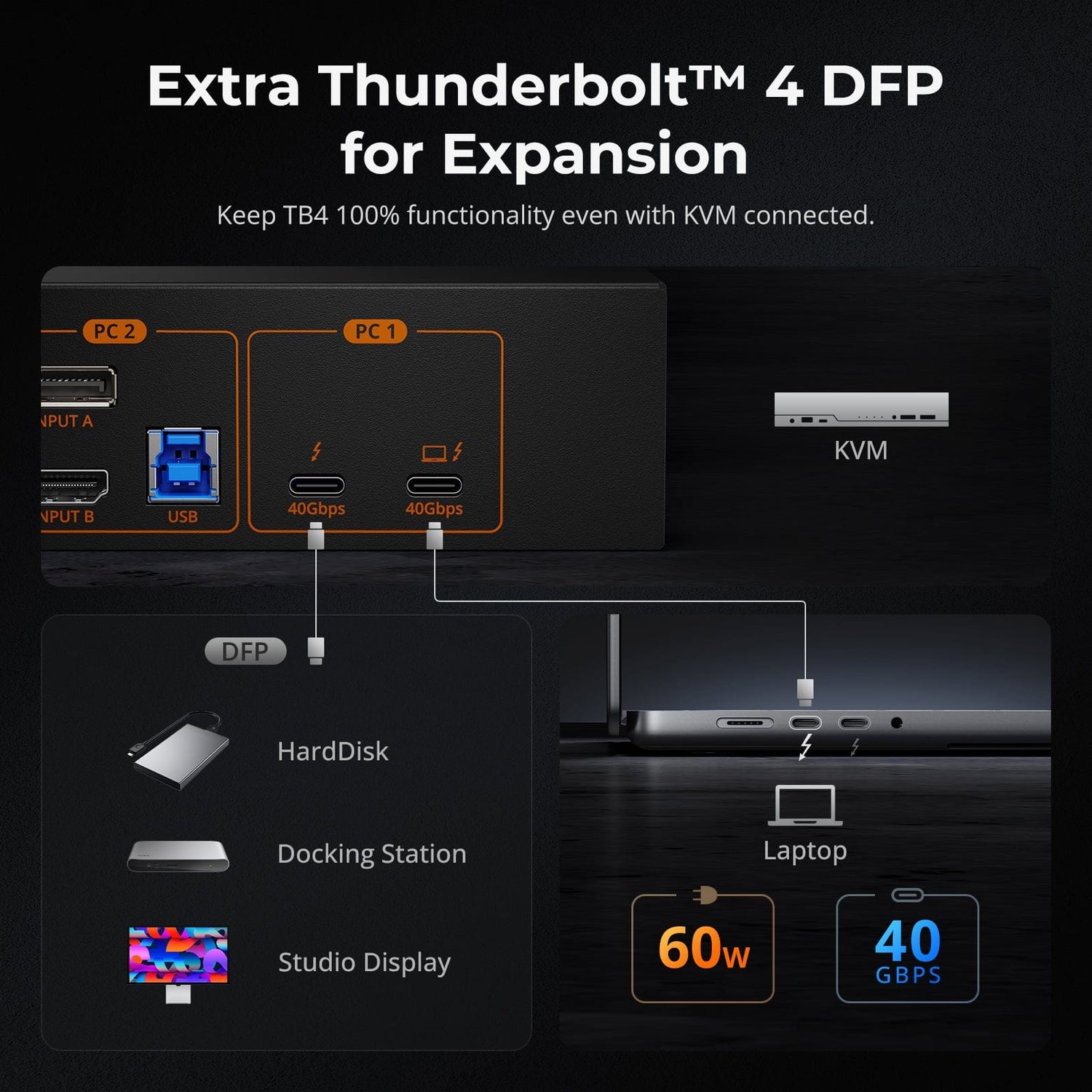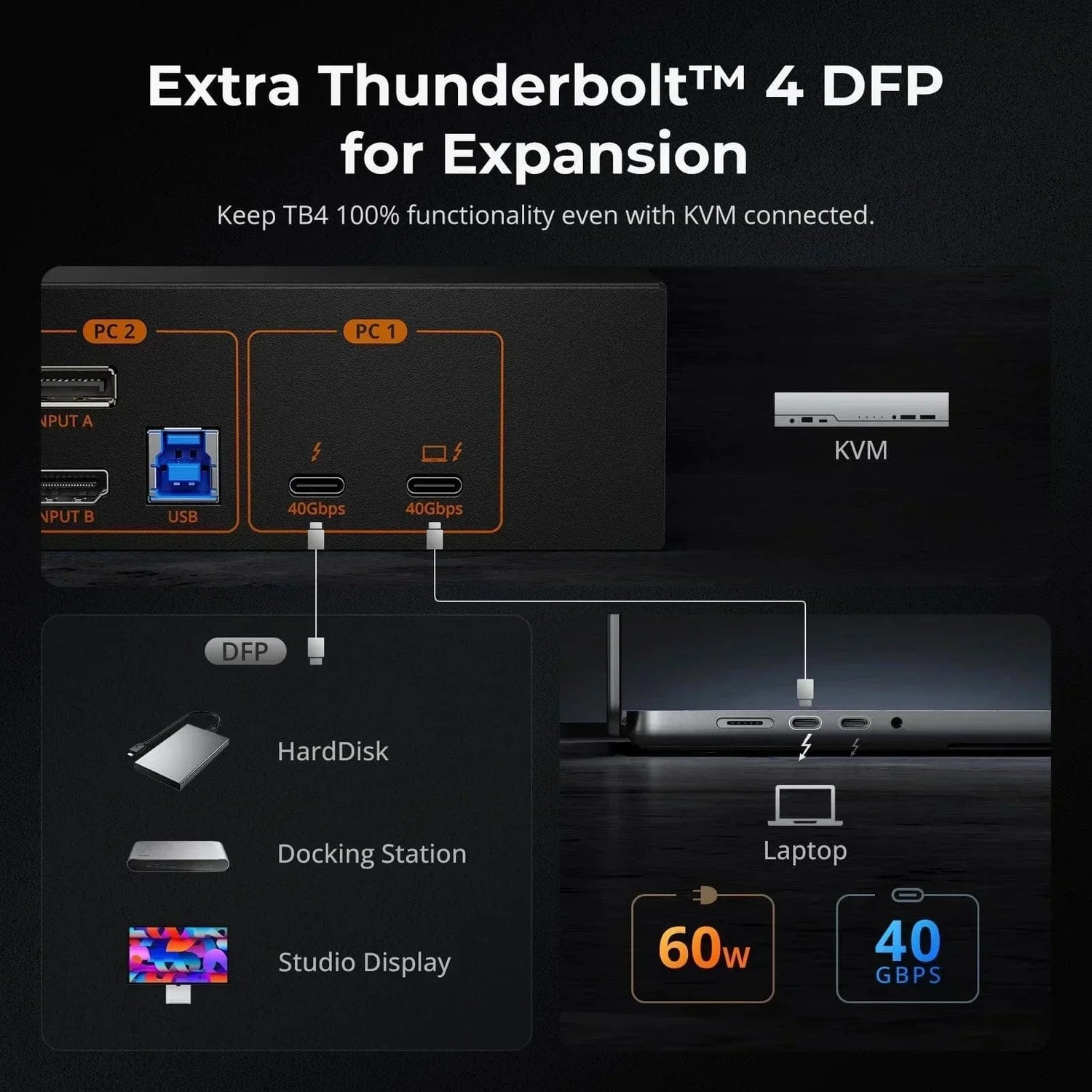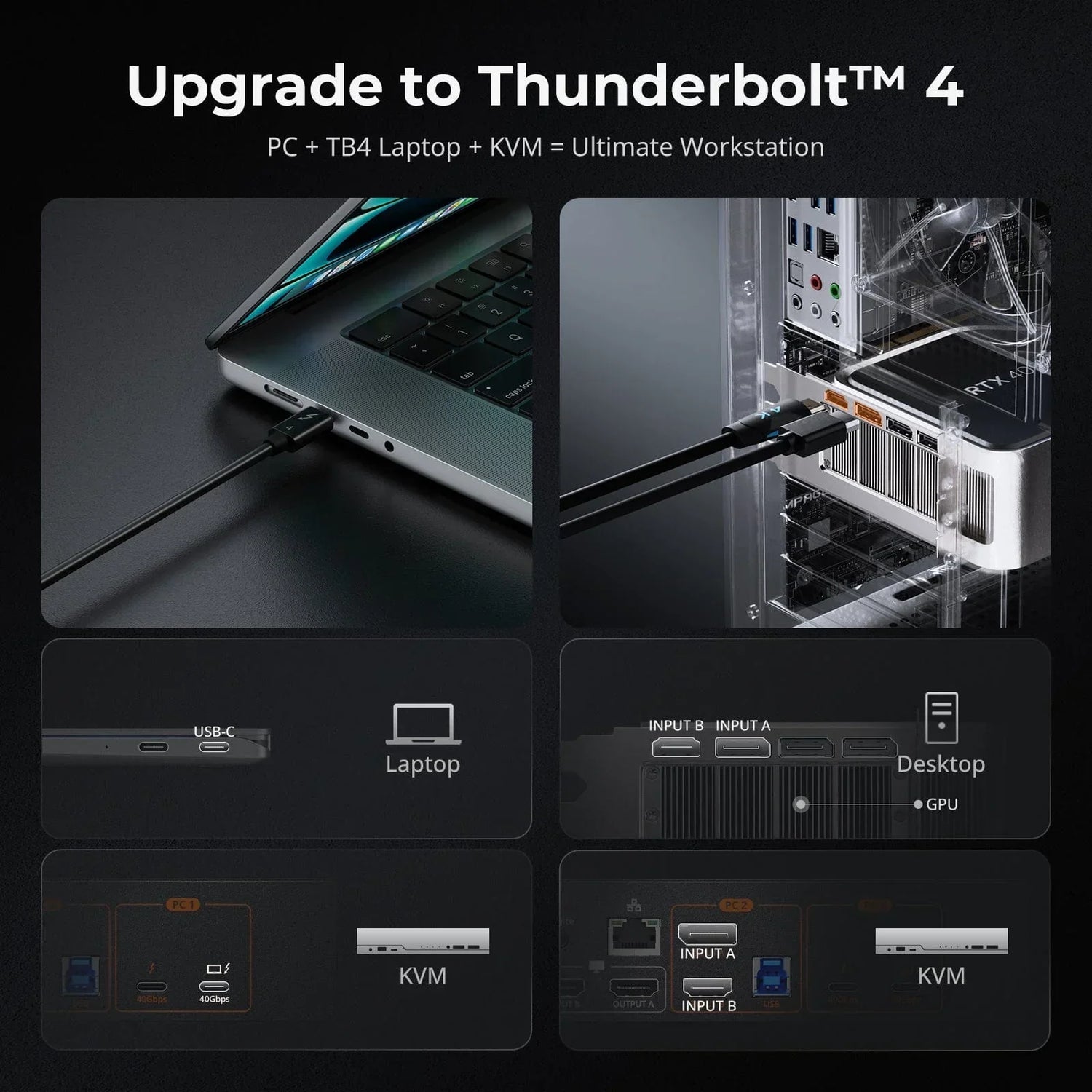DP (DisplayPort) and HDMI (High Definition Multimedia Interface) are among the most commonly used connectors on modern TVs and monitors, transmitting both video and audio from source devices to compatible displays. Being the most widely used versions of the two connector types, DP 1.4 and HDMI 2.1 are important to gamers when it comes to higher-demand gaming setups. Nowadays, gamers aim for smoother gameplay, sharper visuals, and more immersive experiences. Therefore, the importance of choosing the right display connector cannot be overstated, as it significantly influences the gaming experience. This article will explore the features and capabilities of DP 1.4 and HDMI 2.1, helping gamers determine which one is more suitable for gaming.
What is DP 1.4?
DP 1.4 is the fourth major revision of the DisplayPort standard, which was officially announced in March 2016. DP 1.4 introduces several enhancements and improvements over its predecessor, DP 1.3, particularly in terms of bandwidth, resolution support, and features.
DP 1.4 offers a maximum bandwidth of 32.40 Gbps and a maximum data rate of 25.92 Gbps. It supports resolutions up to 8K at 30 Hz, as well as 1440p resolution at up to 240 Hz, 4K at up to 120 Hz, and 5K resolution at up to 60 Hz. DP 1.4 also includes features like DSC 1.2 for visually lossless encoding, FEC, and HDR10 metadata support. Additionally, it provides the Rec. 2020 Color Space, up to 32 inline audio channels for high-quality audio transmission alongside video, and Dual-Mode for DVI and HDMI compatibility.
- DSC 1.2 (Display Stream Compression) is a visually lossless encoding technique that allows for higher resolutions and refresh rates without requiring additional bandwidth.
- FEC (Forward Error Correction) enhances the reliability of data transmission by detecting and correcting errors in the transmitted data stream.
- HDR metadata enables more vibrant colors, greater contrast ratios, and increased brightness levels for compatible displays.
- 2020 Color Space ensures accurate color representation for high-definition content.
- Dual-mode functionality for DVI and HDMI compatibility allows DP 1.4 devices to connect to HDMI 2.0 sources or vice versa.
What is HDMI 2.1?
HDMI 2.1 is the latest version of the HDMI (High-Definition Multimedia Interface) standard, succeeding HDMI 2.0. It was officially introduced in November 2017. HDMI 2.1 brings significant improvements and new features to the HDMI ecosystem, catering to the growing demands of high-definition audio and video transmission.
HDMI 2.1 features a maximum bandwidth of 48 Gbps, offering a significant improvement over previous versions. This increased bandwidth enables support for resolutions up to 8K at 60 Hz and 4K at 120 Hz, delivering exceptional visual clarity and smoothness. Additionally, HDMI 2.1 supports 1440p resolution at up to 240 Hz, ideal for immersive gaming experiences with fluid motion. New features such as VRR and ALLM enhance gaming performance, while QFT and QMS reduce latency and improve content switching speed. HDMI 2.1 also introduces eARC for high-quality audio transmission and Dynamic HDR for vivid, lifelike colors. With its compatibility with previous HDMI versions and support for various audio and video formats, HDMI 2.1 sets a new standard for high-definition multimedia connectivity, meeting the evolving demands of modern entertainment systems.
- VRR (Variable Refresh Rate) allows compatible displays and source devices to synchronize refresh rates dynamically, reducing screen tearing and stuttering in gaming and multimedia applications.
- ALLM (Auto Low Latency Mode) is a technology that automatically switches a display into a low latency or "game mode" when it detects a compatible input source to reduce input lag.
- QFT (Quick Frame Transport) can minimize the delay between when a frame is generated and when it is displayed to reduce latency in the transmission of video frames from the source device.
- QMS (Quick Media Switching) aims to eliminate the blackout period that often occurs when switching between different media sources or content types that have varying resolutions or refresh rates.
- eARC (Enhanced Audio Return Channel) is a feature designed to improve the quality and capabilities of audio transmission between compatible devices, such as TVs, soundbars, and AV receivers.
- Dynamic HDR is used in video and display systems to improve the quality of images by dynamically adjusting the contrast and color on a scene-by-scene or even frame-by-frame basis.
What are the Differences between DP 1.4 and HDMI 2.1?
DisplayPort 1.4 and HDMI 2.1 are two leading video and audio interface standards, each offering distinct features and capabilities. While both interfaces are able to transmit high-definition multimedia content, they differ significantly.
Understanding these differences is essential for selecting the appropriate interface based on specific requirements, whether for consumer electronics, professional displays, or gaming applications. Here’s a chart of the comparison between DP 1.4 and HDMI 2.1 for your reference.
|
Parameters |
DP 1.4 |
HDMI 2.1 |
|
Bandwidth |
32.4 Gbps |
48 Gbps |
|
Resolutions and Refresh Rates |
8K@60Hz/4K@120Hz | 8K@60Hz/4K@120Hz/1080P@240Hz |
|
Data Compression |
DSC 1.2 |
Fixed Rate Link |
|
Audio Support |
Multi-channel |
eARC |
|
HDR support |
Static HDR |
Dynamic HDR |
|
Gaming Performance |
Support VRR, NVIDIA's G-Sync, and AMD's FreeSync |
Support VRR and ALLM |
|
Applications |
Professional Displays/Gaming PCs |
Gaming Consoles/PCs/Laptops/Home Theater |
|
Multiple Displays Supported |
/ |
DP 1.4 vs. HDMI 2.1: Which is Better for Gaming?
-
For PC gaming, choose DisplayPort 1.4
For PC gaming, DP 1.4 is often the better option. It supports higher refresh rates, such as 144Hz at 4K and even 240Hz at 1440p, which are essential for competitive and high-performance gaming. DP 1.4 also supports adaptive sync technologies like NVIDIA G-Sync and AMD FreeSync, ensuring a smoother gaming experience by reducing screen tearing and stuttering. Additionally, DP’s Multi-Stream Transport (MST) capability makes it easier to set up multiple monitors, which is a common configuration in PC gaming and productivity environments. Therefore, for PC gamers seeking the best performance and flexibility, DP1.4 is the preferred choice.
-
For gaming consoles, choose HDMI 2.1
For gaming consoles like the PlayStation 5 and Xbox Series X, HDMI 2.1 is the best choice. This is due to its higher bandwidth of 48 Gbps, which supports resolutions up to 8K at 60Hz and 4K at 120Hz. Features like Variable Refresh Rate (VRR), Auto Low Latency Mode (ALLM), and Enhanced Audio Return Channel (eARC) are included, enhancing the gaming experience on modern TVs. These features help reduce screen tearing and latency while providing high-quality audio, making HDMI 2.1 ideal for console gaming setups where compatibility with TVs and home theater systems is crucial.
Other Frequently Asked Questions
What are the main benefits of HDMI 2.1 compared to previous versions?
HDMI 2.1 offers significantly higher bandwidth, supporting resolutions up to 10K and refresh rates up to 120Hz. It also introduces features like dynamic HDR, VRR (Variable Refresh Rate ), and eARC (enhanced audio return channel).
Is HDMI 2.1 backward compatible with older HDMI versions?
Yes, HDMI 2.1 is backward compatible with HDMI 2.0, 1.4, and earlier versions. However, the capabilities of the connection will be limited to the lowest common denominator among the devices.
Is DP 1.4 compatible with HDMI devices?
Yes, DP 1.4 devices are generally compatible with HDMI devices using adapters or converters. However, features specific to DisplayPort, such as MST or DSC, may not be fully supported when using HDMI devices.
Peripheral Devices for Gaming over DP 1.4 or HDMI 2.1
KVM switches (Keyboard, Video, Mouse) are handy tools for managing multiple computers with a single set of peripherals. When it comes to gaming, you'll want a KVM switch that supports high refresh rates and resolutions to ensure a seamless gaming experience. If you’re looking for KVM switches to elevate your gaming experience with top-notch DisplayPort and HDMI solutions, TESmart has the solutions you need.
Come and discover our HDMI 2.1 4 Port KVM Switch Kit 4K60Hz with USB 3.0 Docking Station, 4 PCs 1 Monitor——We introduce our USB 3.0 Docking Station HKS401-P23, featuring a super-speed data transfer rate and a charging USB 3.0 port. The new front panel buttons simplify monitor signal control, while the integrated microphone and L/R audio output enhance functionality. This KVM switch allows you to control 4 PCs with one keyboard, mouse, and monitor, and includes four 1.5m HDMI/USB combo cables for easy connection. Enjoy stunning 3840x2160 (4K)@60Hz 4:4:4 resolution support, industry-leading K/M compatibility in pass-through mode, and accurate monitor display with EDID emulation. Switch effortlessly using hotkeys, mouse, IR, or buttons.
For DP 1.4 KVM Switches, we recommend our DP 1.4 Dual 8K@60Hz KVM Switch Gaming Dock for 2 PCs 2 Monitors, w/ EDID, G-Sync FreeSync——Experience dual 8K60 vision with TESmart's DKS202-M24, a dual-monitor KVM switch with a docking station powered by advanced EDID emulation in DP1.4. Ideal for dual 8K/4K editing and gaming, it supports 12-bit color, G-Sync, FreeSync, FEC, DSC, and dual 4K@144Hz/165Hz through DSC 1.2a. Manage two PCs with one keyboard, mouse, and dual 8K60Hz displays, supporting resolutions up to 8K@60Hz and backward compatibility with 4K@60Hz/120Hz/144Hz. It includes complete PC cables (2 USB 3.0, 4 DP), supports USB 3.2 Gen 1, and offers seamless switching via hotkeys, mouse wheel, front panel button, or IR signals. Compatible with various operating systems and perfect for home, office, or education, it ensures efficient multitasking with features like EDID emulation, K&M pass-through, legacy emulation mode, and hot plug support.












